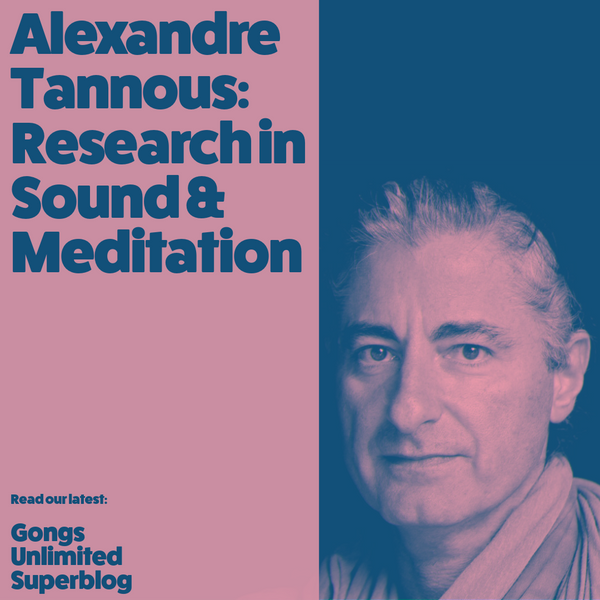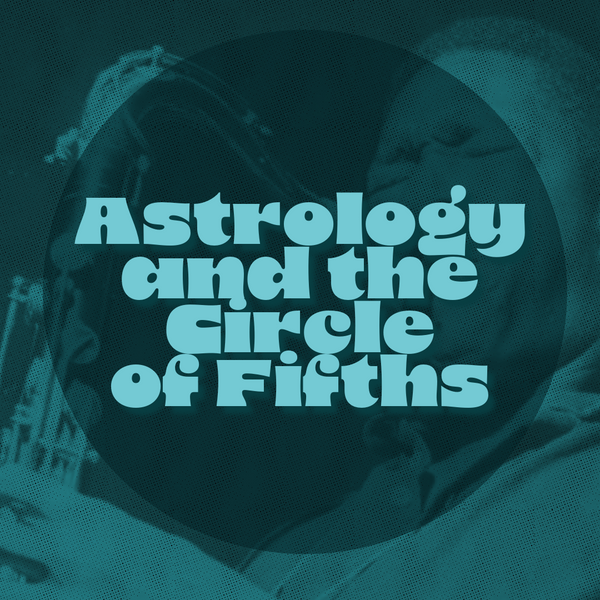"Four times daily the music of chililitli (copper disks), of cornets, flutes, conch shells, and of a metal gong struck with metal hammer, sounded from the ninth story of this temple, calling the King to prayer. In time, this whole temple to the ‘unseen god’ came to be called chililitli in honor of its tintinnabulation" ...
"... a metal casing that they called tetzilacatl that served as a bell, which they struck with a hammer, also made of metal, and had almost the same sound as a bell"
-Fernando de Alva Ixtlilxochitl, Historia Chichimeca, 17th Century
There’s an ocean of reading and bloggery out there covering the long-standing traditions of gongmaking in Asia and even the more recent 20th century explosion of European gongmaking. But when and where else in history can we look to find people banging on metal and other percussion to build a stronger connection to Spirit?
A history-minded percussionist and customer recently pointed us to some sources he discovered while researching the pre-Columbian / pre-conquest history of Central America and what is now Mexico. These sources suggests there were gongs and other gong-like instruments being used by the native Nahuatl-speaking people (such as the Aztecs) in the 15th century and earlier!
Sadly, the colonizing and invading Spanish forces melted all of these precious metal instruments down for their valuable raw materials, so no artifacts of these gong-like instruments remain today. Many of the thriving pre-conquest cultures who used primarily oral traditions to record their history were conquered and/or assimilated. Thankfully there are still a handful of faithful sources that point to the existence of these instruments and how they were treated and utilized.
One of these sources was a 16th and 17th century bureaucrat, interpreter, and historiographer named Fernando de Alva Ixtlilxochitl. His father’s family had roots in Spain, while his mother’s family were descended from the rulers of Tetzcoco (Texcoco) and aristocracy of Teotihuacan. His mixed Nahuatl and Spanish ancestry allowed him to move between the two worlds, giving him access to the traditions and oral histories of the pre-Colombian cultures of the region. His father’s position in the colonial government as well as his mother’s generational wealth gave him access to a European education and eventually a position within the colonial government himself.
Because of his unique position he had a major impact on the historical record of pre-Colombian cultures in what is now Mexico. His work, Historia Chichimeca (commissioned by the Spanish Viceroy), is one of the first and only major recorded accounts of the traditions and histories of the pre-Colombian people from a Nahuatl-speaker's perspective. It focuses on a number of his ancestors who ruled the area before the arrival of the Spanish, including the famed poet philosopher king Nezahualcoyotl. He notes the use of these gong-like instruments during ceremonies and rituals in the temples of his ancestors (see these passages at the top of the blog).
Another historian from this time, a Spanish chronicler and monk named Bernardino de Sahagún, noted the appearance of these same instruments and their sacred ceremonial use in his massive 16th century work the Florentine Codex:
“At midnight the priests disrobed, bloodied themselves with the pricking of maguey spins, then bathed themselves, blew tecciztli (conch trumpets), and struck chililitli with pine mallets.”
-Saldivar, Historia de la Musica en Mexico, 1934
A more recent source comes from Dr. Arnd Adje Both, a German music archaeologist with a special expertise and interest in Mesoamerican cultures. His doctorate focused on instruments unearthed at the main temple of the Aztecs and he continues to do research there today.
“Among the Aztec idiophones were rattles made from dried seed pods (yoyotli): row-rattles composed of conch tinkles (cuechtli, cuechochcacalachtli); rows of gold and copper alloy bells (oyoalli); different types of ceramic rattles (cacalachtli); gourd rattles (ayacachtli); wooden rattle sticks with box-shaped resonators (chicahuaztli); bone rasps made of human femurs and deer shoulder blades (omichicahuaztli); turtle shells beaten with deer antlers (ayotl); lithophones made from volcanic stones beaten with stone spheres (tehuehuetl); and metal gongs struck with mallets (tlatlapanca, chililitli). Among the most important idiophones were sculptured slit drums made of hardwoods (teponaztli), which were beaten with two gum resin covered wooden mallets called “rubber hands” (olmaitl)... Furthermore, small metal drums made of gold (teocuitlahuehuetl) are mentioned, but it is not certain if these were musical instruments or diminutive representations, as no specimen has been preserved.”
-Both, The World of Music, Music Archeology: Mesoamerica, 2007
Dr. Both goes on to note that the the instruments weren't classified by type so much as they were classified based on the symbolism of the sound they created and the material they were made from. Drums and metallic sounds had a "royal" energy to them, associated with the element of Fire and with the Sun itself. Horns and shells were associated with the creative world, with the element of Water, and with the Moon.
These instruments were considered sacred idols that were worshiped on altars and stored in specific temples to be specially cared for and revered.
He mentions that the Aztec didn’t necessarily have a concept or term for what we think of as “Music” today. There was no distinction between instrumental musicians and singers.
“All musicians were considered to be ‘singers’ (cuicanimeh). This concept is expressed by the designation of the slit-drum player, “singer of the slit-drum” (teponazcuicani), revealing that he did not ‘play’ but ‘sang’ on his instrument.”
- Both, continued
Instrument players were highly specialized, indicating that these were extremely important roles in their society and pointing to the sacred spiritual and ritualistic function of music as it related to temples and courtly proceedings. This was also reflected in the terminology that surrounded Aztec instruments and their players, who were considered vehicles for songs and the instruments, which were themselves considered manifestations of the gods.
“The blue-painted rattle stick of the rian priests, literally ‘instrument to strengthen the fog’ (ayauhchicahuaztli) was shaken to bring the rain from Tlalocan, sphere of the rain god Tlaloc.” ...
“Some musical instruments were considered to be sounding idols, indicating that ritual music could be perceived as a voice of the gods, and that the Aztec instrumentalist fulfilled the role of an expert mediator through whom god sang.”
- Both, continued
Beyond the metal instruments that were melted down, many other instruments persisted after the Spanish conquest, particularly wooden drums like the huehuetl and the teponaztli which are still a major part of Mexican music today, and some evidence of much older stone gongs and other types of lithophones discovered around Central and South America
In the 17th century, the Spanish introduced the guitar, violin, harp, trumpet, and other European instruments. The influx of enslaved African people to Central America and the Caribbean popularized percussion instruments like the cajon and the marimba. The mixture of these different influences and instruments created what we think of as traditional Mexican folk music today.
While we can’t know exactly what the music of the Aztecs sounded like or how it was arranged, we can see the influence in both the instruments that persist (the slit-drum) and in the instruments that have replaced their native counterparts (modern cymbals, gongs, and bells replacing the gold and bronze chililitli that were melted down). There are also illustrations and artwork of the Aztecs that depict the ceremonies and rituals in which the instruments are being played.
Some musicians have used what we know about the past to use what remains of these instruments today to recreate the sacred experience of Aztec music and song.
Mexican composer Carlos Chavez has gained fame for his integration of Mexican pre-Hispanic instruments into his works “Sinfonia India,” “Xochipilli” and “Macuilxochitl”.
Christopher Garcia–who brought this topic to our attention–is another composer, educator, and multi-instrumentalist who has dedicated time and effort to researching and exploring these instruments and their history.
His website and research was very helpful in helping to find sources to write this blog. Watch the video above for an example of some pre-Columbian instruments mentioned in this blog and then out his website with more information and performances below. Thanks for your suggestion and your expertise, Christopher!
http://christophergarciamusic.com/
https://indigenousinstrumentsofmexicomesoamerica.weebly.com/chililitli-tetzilacatl.html
Here's a list with some of the other sources used in researching this topic:
https://www.mexicolore.co.uk/aztecs/music/music-song-and-dance-among-the-aztecs-a-short-introduction
https://www.britannica.com/art/Native-American-music/Mexico-and-Central-America
https://geo-mexico.com/?p=12043
https://www.jstor.org/stable/41699767
https://www.oxfordbibliographies.com/display/document/obo-9780199766581/obo-9780199766581-0237.xml



M H
Author